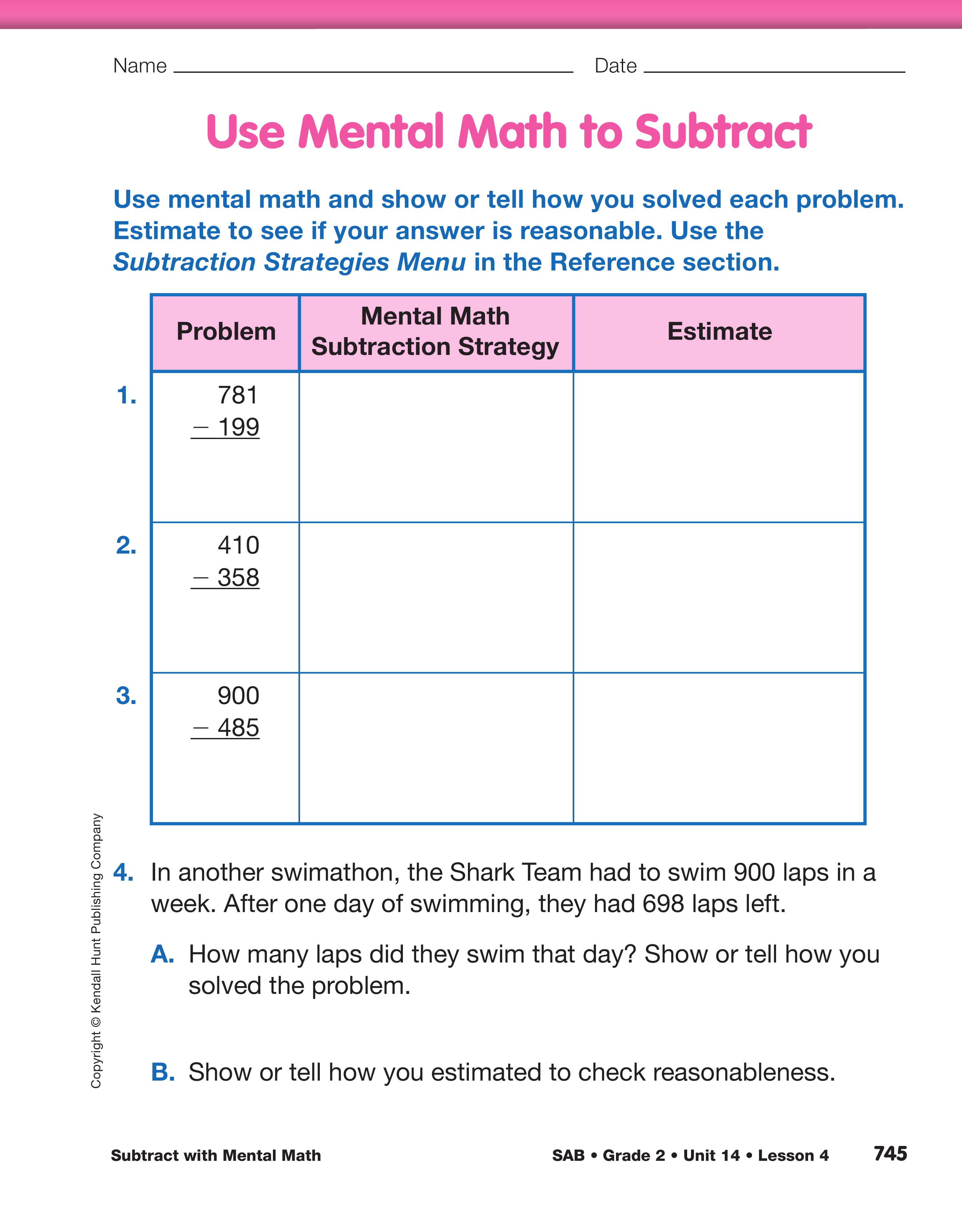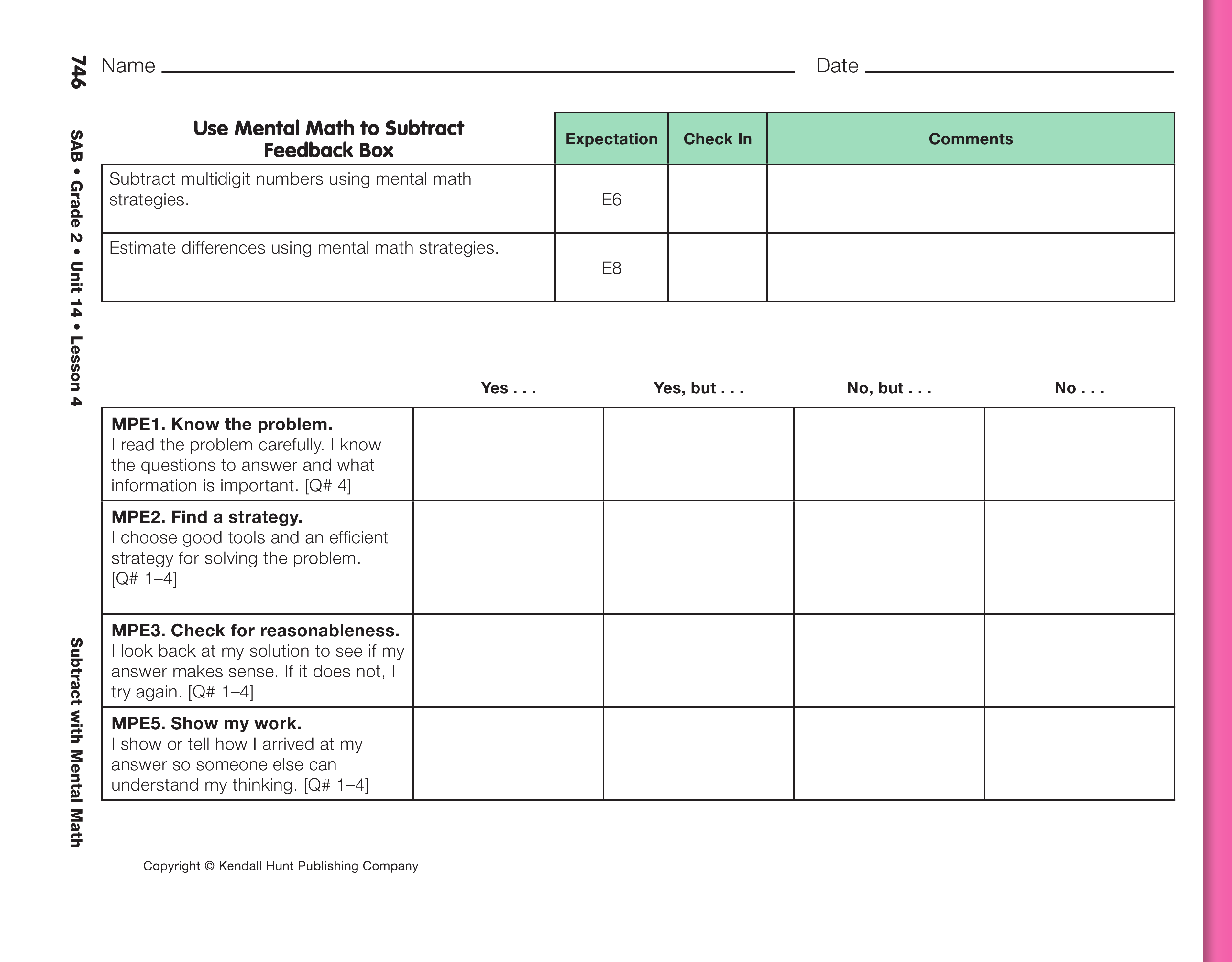Select problems on the Mental Math Subtraction
Strategies page in the Student Activity Book to
review and discuss.
- What subtraction strategies are the easiest to use?
- Why do you think subtracting one from both numbers
is a good strategy to use for Question 4? (Possible response: It doesn't change the answer
and it's easier to subtract 999 − 863.)
- When should you use compensation [Josh's strategy]
to solve a subtraction problem? (Possible
response: when the numbers are hard to subtract)
- How does estimating an answer help you? (Possible response: You can check to see if your
answers are correct. They should be close to the
estimate.)
- Does everyone have to get the same answers
when you estimate? (Possible response: No, it
depends on the strategy you use, but all the estimates
are close.)
- Were all your answers reasonable? How did you
know? What did you do when they were not reasonable? (Possible response: If my answer was
close to my estimate, then I felt confident about
the answer. If they were not, I went back and
checked to see if I made a mistake in my calculations.)
Assign the Use Mental Math to Subtract pages in the
Student Activity Book to assess students' understanding
of estimation and mental math skills for subtraction.
Explain to students that for Questions 1–4 they
have to use a mental math strategy for finding the
exact answer and then check their answers by estimating.
Provide access to base-ten pieces, open
number lines, the Estimation Strategies for
Subtraction chart, and the Subtraction Strategies
Menu from the Student Activity Book Reference section.
Assign the Use Mental Math to Subtract pages with the
Feedback Box in the Student Activity Book to assess
students' abilities to subtract multidigit numbers using
mental math strategies [E6]; estimate differences using
mental math strategies [E8]; know what is important to solve
a problem [MPE1]; find an efficient strategy for solving a
problem [MPE2]; estimate to check for reasonableness
[MPE3]; and show or tell how to solve a problem [MPE5].

















